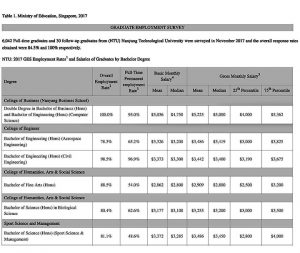24 February
I attended a coordination meeting for cooperation of Educational and Commercial Sectors held on 2 February at the Union of Myanmar Federation of chambers of Commerce and Industry(UMFCCI). At the meeting, Union Education Minister Dr Myo Thein Gyi discussed about reforms of Education sector and Prof. Dr Aung Tun Thet gave a talk on the topic “Schools and Industry Partnership”. Dr Aung Tun Thet discussed about the rate of University graduates and their job opportunities and the mechanism matching education sector with occupation sector. Prof. Dr Antonio of Bologna University, Italy, a manager who has been working in a project to link Department for Higher Education with some European Universities, said: “ I am sorry to say that university graduates and their job opportunities are going in opposite directions”. Thus future planning for university graduates and their job opportunities in a period of five to ten years should be included in educational policies.

For instance, according to the discussions by the Education Minister, government schools and private schools are keeping up with student population of 9.7 million with 400,000 teachers. It means the ration of students and teachers is 24:1. For some village tracts and States, the ratio is more students per teacher. According to the UNESCO figures, the numbers of teachers required for Primary, Middle and High schools are 2.3% of all graduates whereas 13% in the Philippines and Malaysia respectively,7.2% in Japan, 9.5% in the United States, 12.4% in the Netherlands, 16% in Austria, 22.6% in Viet Nam and 25.2% in Laos.Graduates from Education Colleges have come out after completing their studies.
In other countries, education concerning with related subjects is awarded from nursery, primary, middle and high schools. Even if promoted, they are not transferred to any other schools; they have to stay in the same school to keep in touch with the students. For the employment of teachers, they are chosen from outstanding students of 5-10% from all graduates and salaries are awarded to meet their daily needs. Their salaries are far more than those of other government employees. When enquired about educational system in Singapore, 50% graduates of all graduates focused on engineering not only for their own but also intended for other countries as their country is not agriculture-based. Again inquired about those from Nepal, they relied on tourism for foreign exchange; high schools and colleges dealt with subjects on tourism and hospitality services. Concerning agricultural sector, mountain agriculture is suitable for mountainous regions.
As I studied for my Ph. D in Germany, I came to know their climate is not suitable for rice paddy and sugar cane plantations, they focused on learning on cultivation of wheat, barley, radish plant, pear, apple and cherry trees. In 2007 survey, employment rates of graduates who got their degrees from Singapore Nanyang Technological University are higher: B. Accountancy,97%; B. Business 93%; B.E (Civil Engineering) 98.5% and B. Sc( Biological Science) 80%.
Enrollment of students is in accordance with requirements. If more students are enrolled, they will get crowded at the science and applied science classes, let the research work alone, which is really necessary for the country. The number of students going to universities in Singapore, Germany, Switzerland and other European countries are less than those in Technical & Vocational Education and Training. (TVET) where as many as 50-80% students are learning their skills. Their chances for job opportunities are reasonably good.
In conclusion, technical and vocational education is required in accordance with the development of Myanmar. So, let us give vocational education a top priority. By Dr. Myo kywe (AUAA)
Translated by Arakan Sein


